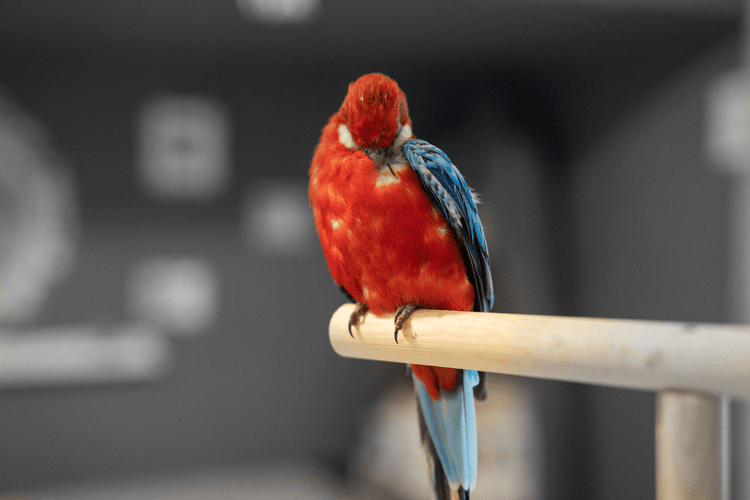
Why Does My Bird Pluck His Feathers?
Birds molt naturally, but sometimes birds can start pulling out their feathers excessively. Feather picking can be brought on by a multitude of causes and may include some hard to manage symptoms. Traditionally, psychological or physiological disturbances are what lead to excessive feather plucking in birds, but pinning down which physiological or psychological disturbance is responsible for this odd behavior can be difficult.
For most, it seems that their bird’s feather plucking comes out of nowhere. One day your bird is happy and singing on his perch and then the next he’s pulling out his feathers by the dozen. Feather plucking, also known as feather picking, can be a scary behavior because sometimes the source of the behavior is not easily identifiable.
Birds naturally pluck their feathers to regulate their temperature, for protection, and to attract a mate. Standard feather picking behavior includes plucking a few feathers to preen or groom. Destructive feather plucking consists of a bird roughly pulling out large sections of his or her feathers at one time.
Common Causes of Feather Plucking
- Lack of sunlight and fresh air
- Improper diet, usually through dyes and preservatives being present in food
- Disturbances to Normal light and dark cycles
- Dry skin
- Metabolic disorders
- Skin infection and inflammation
- Cancer
- Boredom
- Emotional stress
- Allergies
- Parasites
- Feather cyst
- External parasites
- Inadequate grooming
- Pyoderma
- Fungal dermatitis
- Inadequate photoperiod
- Psittacine Beak and Feather Disease virus (PBFD)
- Liver disease
- Kidney disease
- Aspergillosis
- Intestinal infections
- Reproduction
- Thyroid disorders
- Heavy metals
Understanding Feather Plucking
Finding the right balance of activity for your bird is crucial. Birds that are overstimulated or understimulated are more likely to pluck their feathers, so make sure that your bird has toys to occupy his time, but also make sure that he is allowed quiet time away from stimulants and distractions. Some birds will begin plucking their feathers after a change of location such as moving to a new home.
When researched by Purdue University it was found that physical environment, including cage placement, was a key factor for generating feather picking. “The results showed that birds with no view of the entry door showed no difference in feather picking no matter how close they were to the door.” “In contrast, birds that faced the door feather picked more depending on the distance of their cage to the door.” concluded by Purdue University.
The two most common forms of destructive feather behavior include feather snapping and feather plucking. Feather snapping is when a bird breaks the feather shaft on its feathers resulting in “v” shaped feathers. Some birds will snap their feathers near the base of the shaft while others leave no feathers behind at all except for their down feathers. Feather plucking, as previously described is when a bird fully pulls out his feathers leaving behind large bald spots.
When it comes to feather plucking a veterinarian is needed to diagnose the cause and to prescribe treatment. Due to the fact that a multitude of conditions can be the cause of your bird’s feather plucking your veterinarian will need to run several tests to get to the bottom of your bird’s illness.
Your veterinarian is likely to ask about your bird’s diet, its housing situation, the types of toys he plays with, and if he has had any exposure to other animals. While each case is different, traditionally, a vet will order a variety of blood tests to be run which will most likely include a CBC (complete blood count), a blood chemistry test, and antibody measurements. Next, some skin scrapings and feather samples will be taken. These samples will be used to determine if a specific type of inflammatory reaction in the skin is taking place, or if any bacteria or fungi are present that could be causing your bird’s illness. As a last resort ultrasounds or endoscopies may be performed to pinpoint the source of your pet’s illness.
Having a bird with a feather plucking condition can be difficult. We always want to help our pets live their best lives, but with feather plucking, there’s no concrete way to determine what is prompting the negative behaviors in your parrot without trial and error which can be trying for both bird and human. If your bird is struggling with feather plucking talk to your vet today.